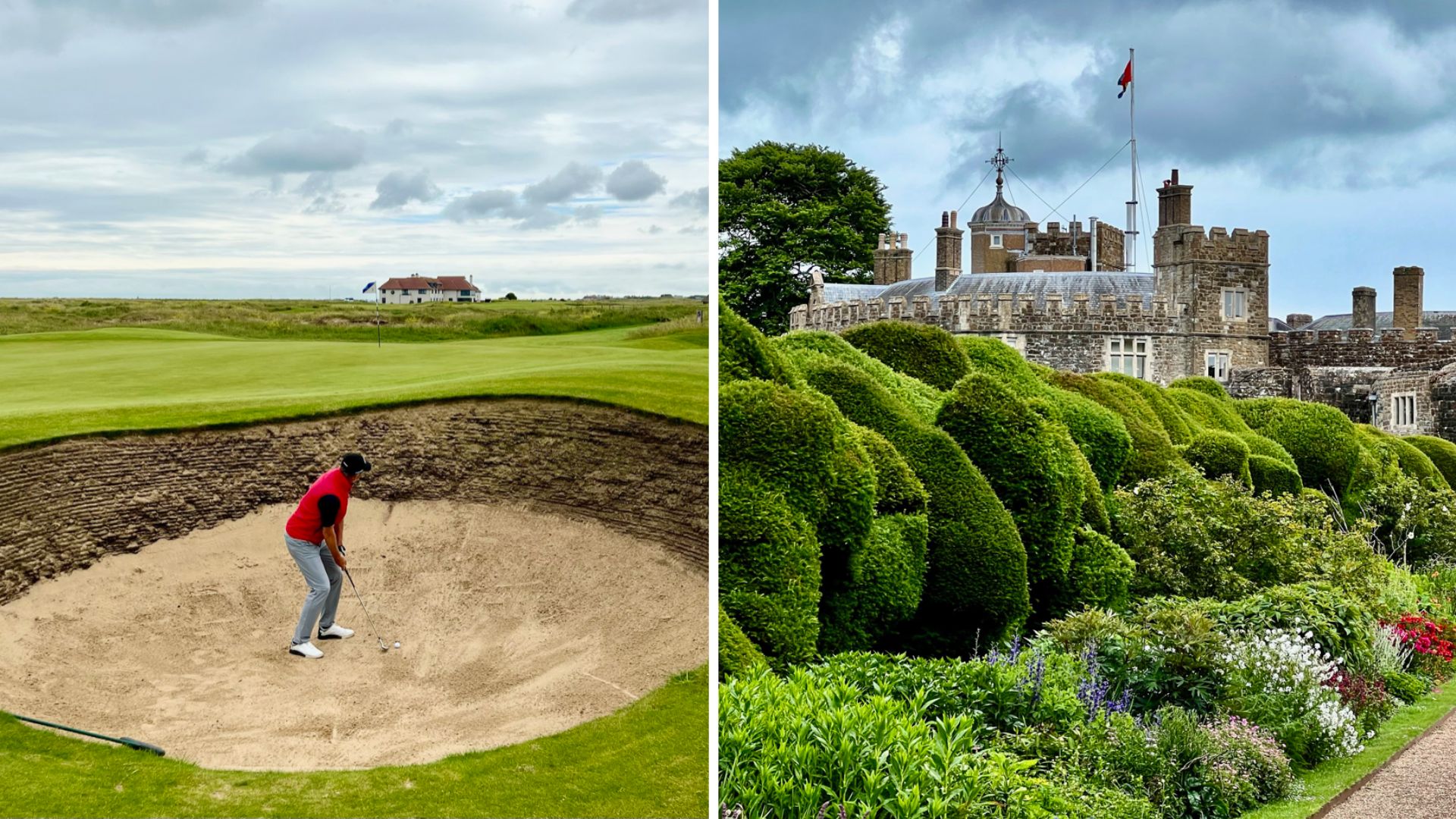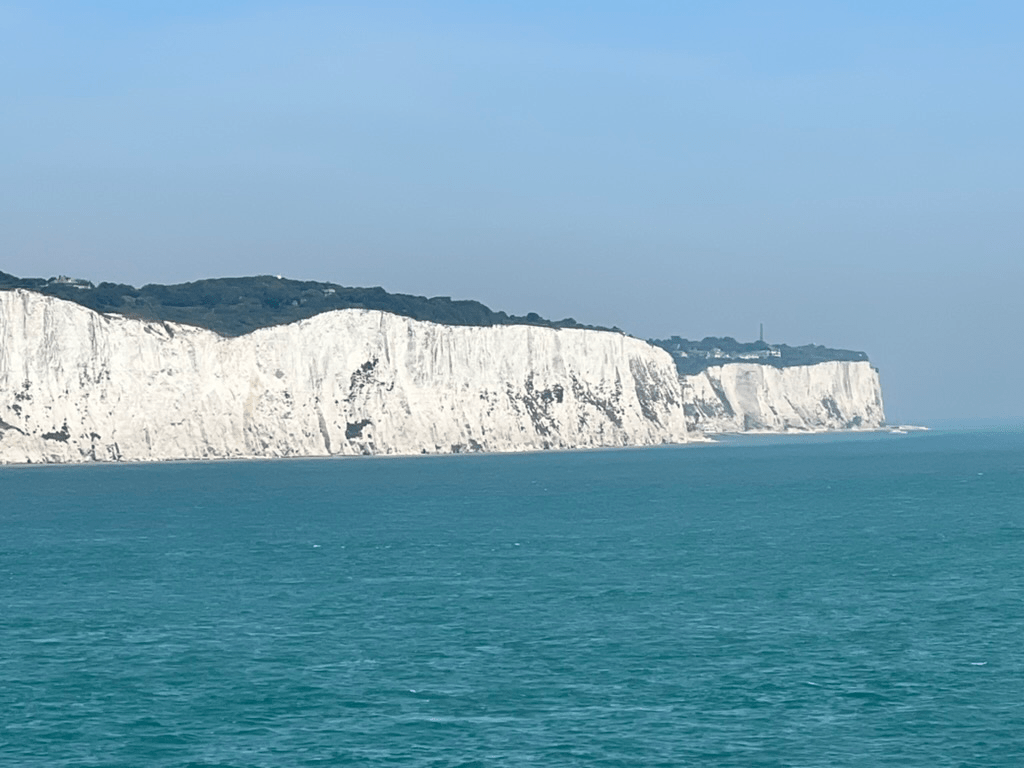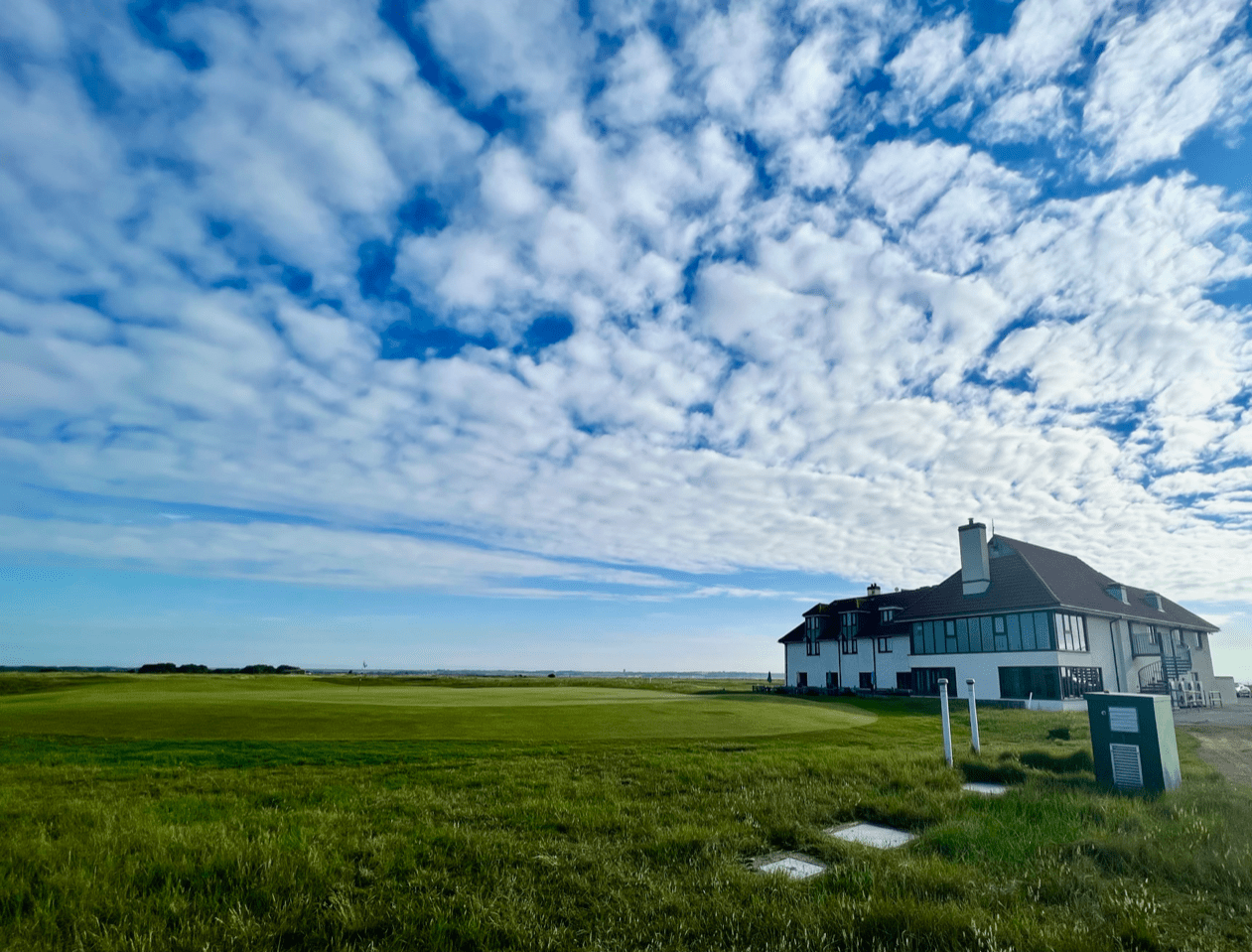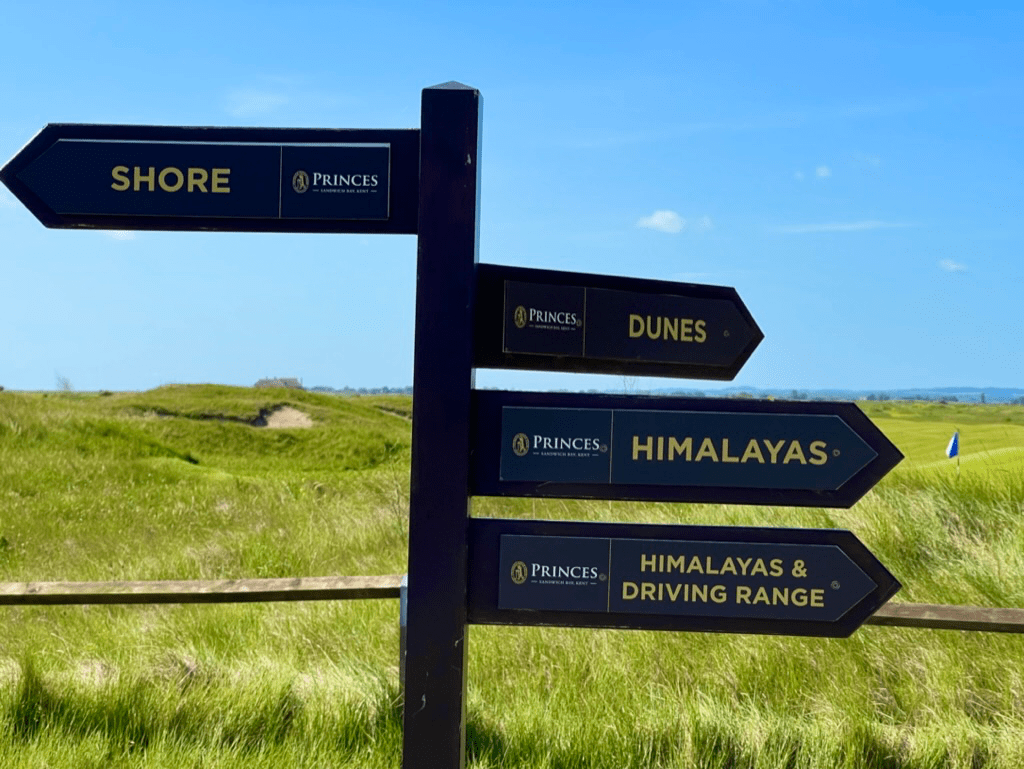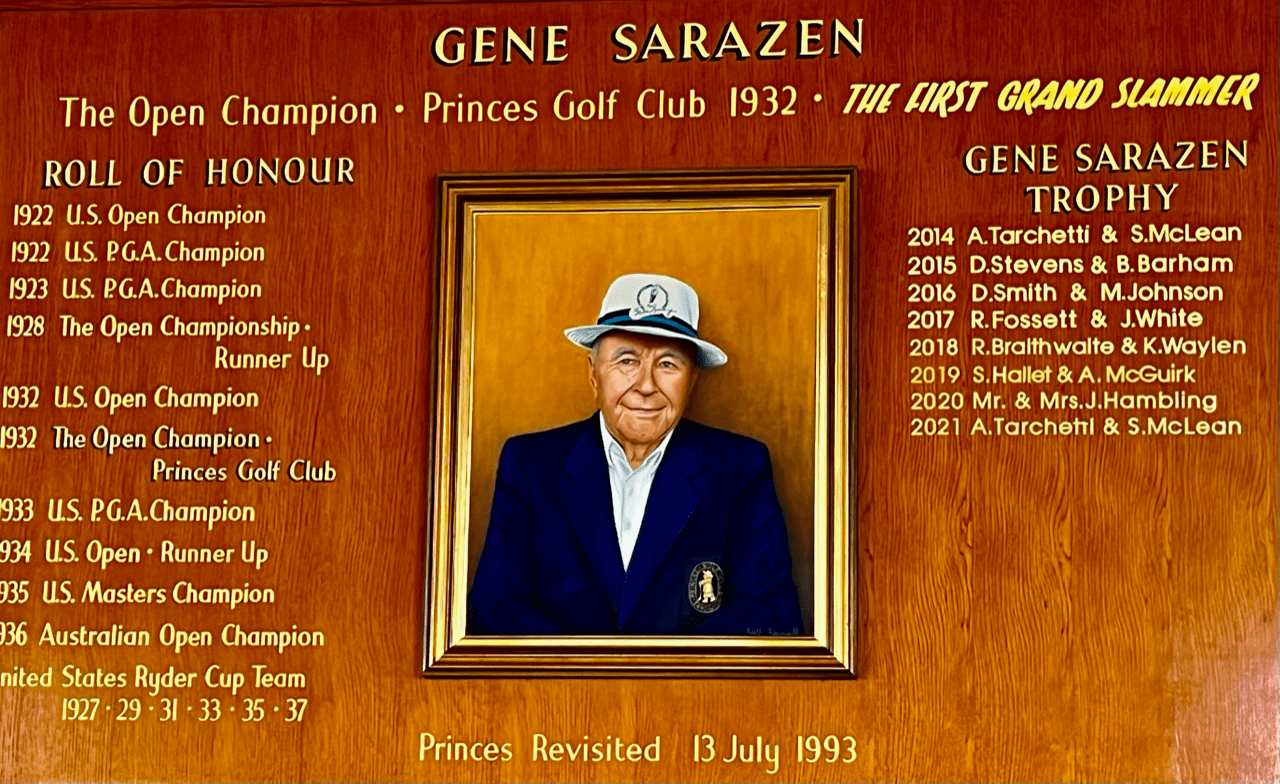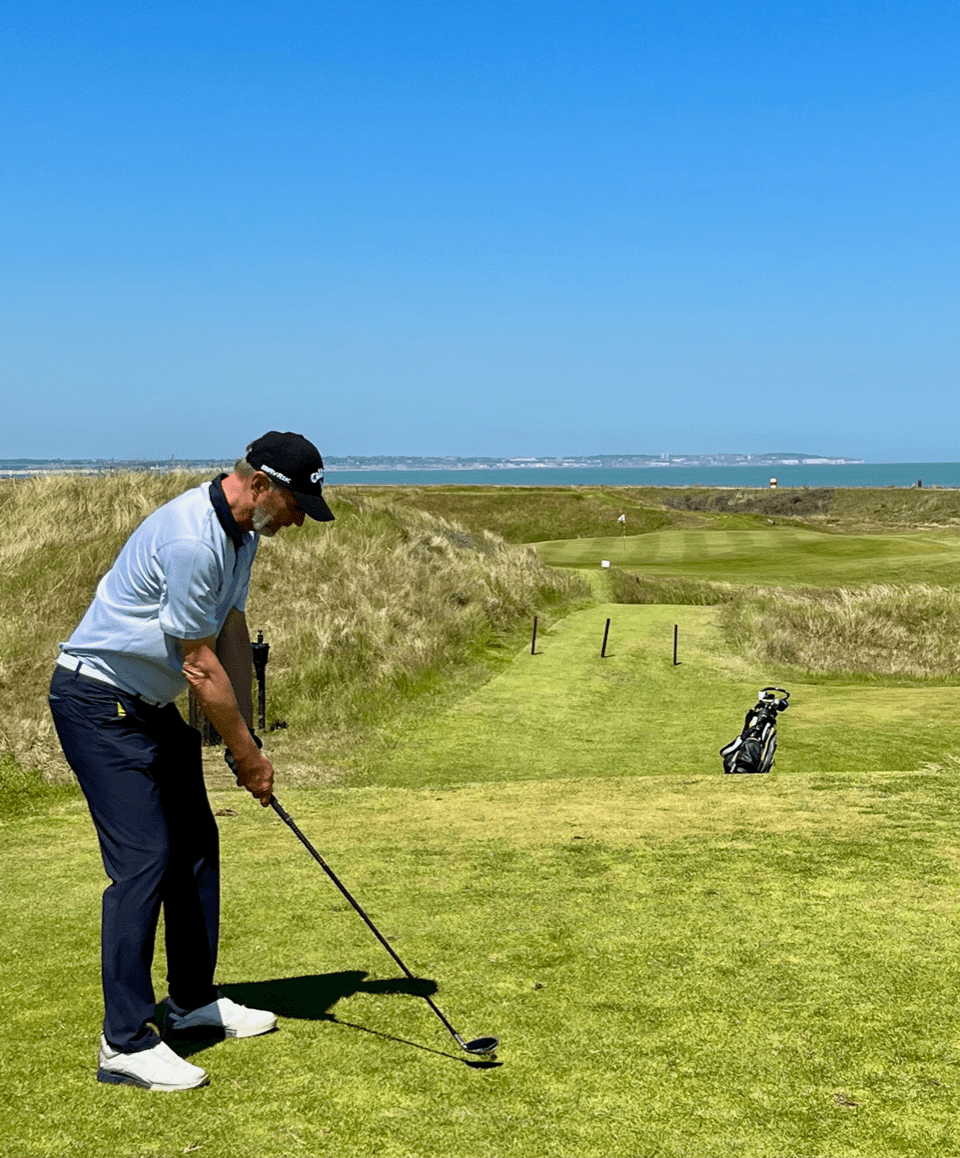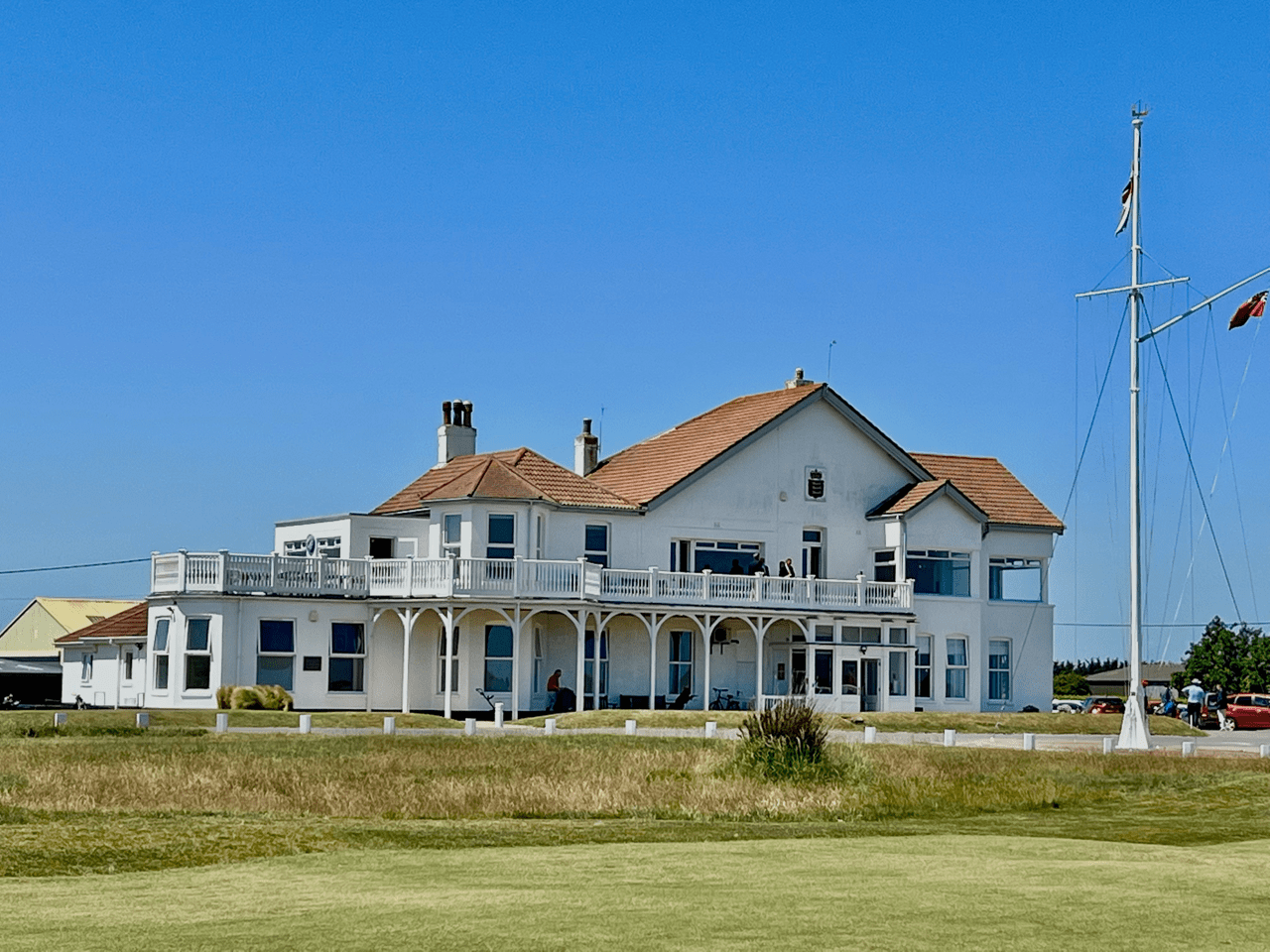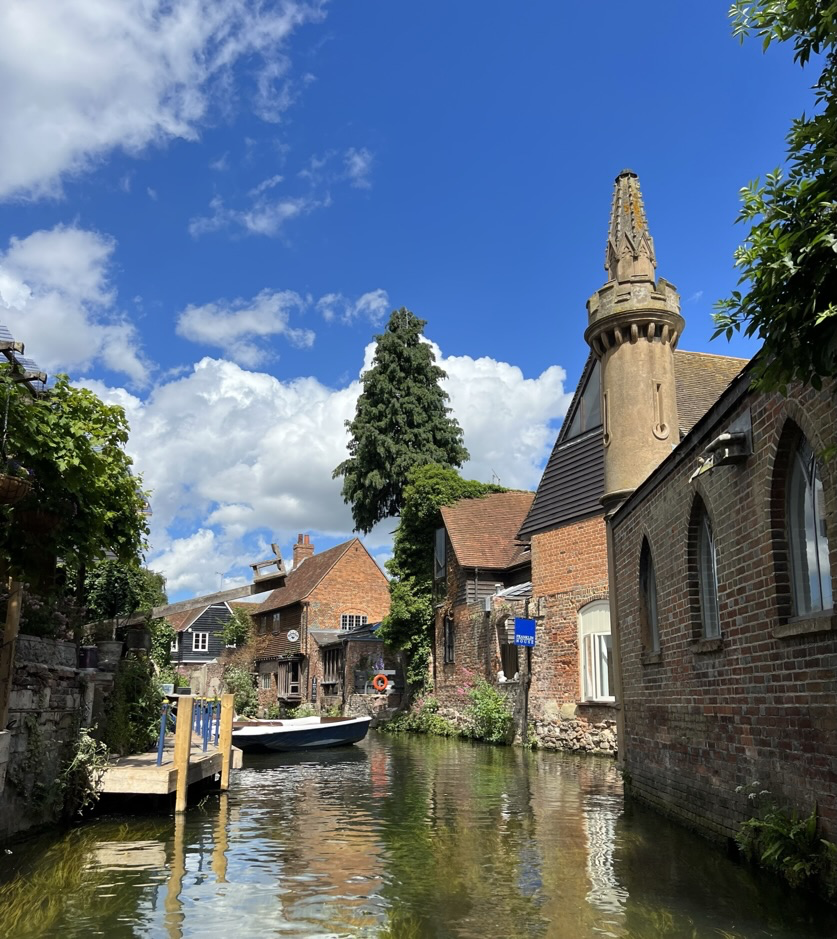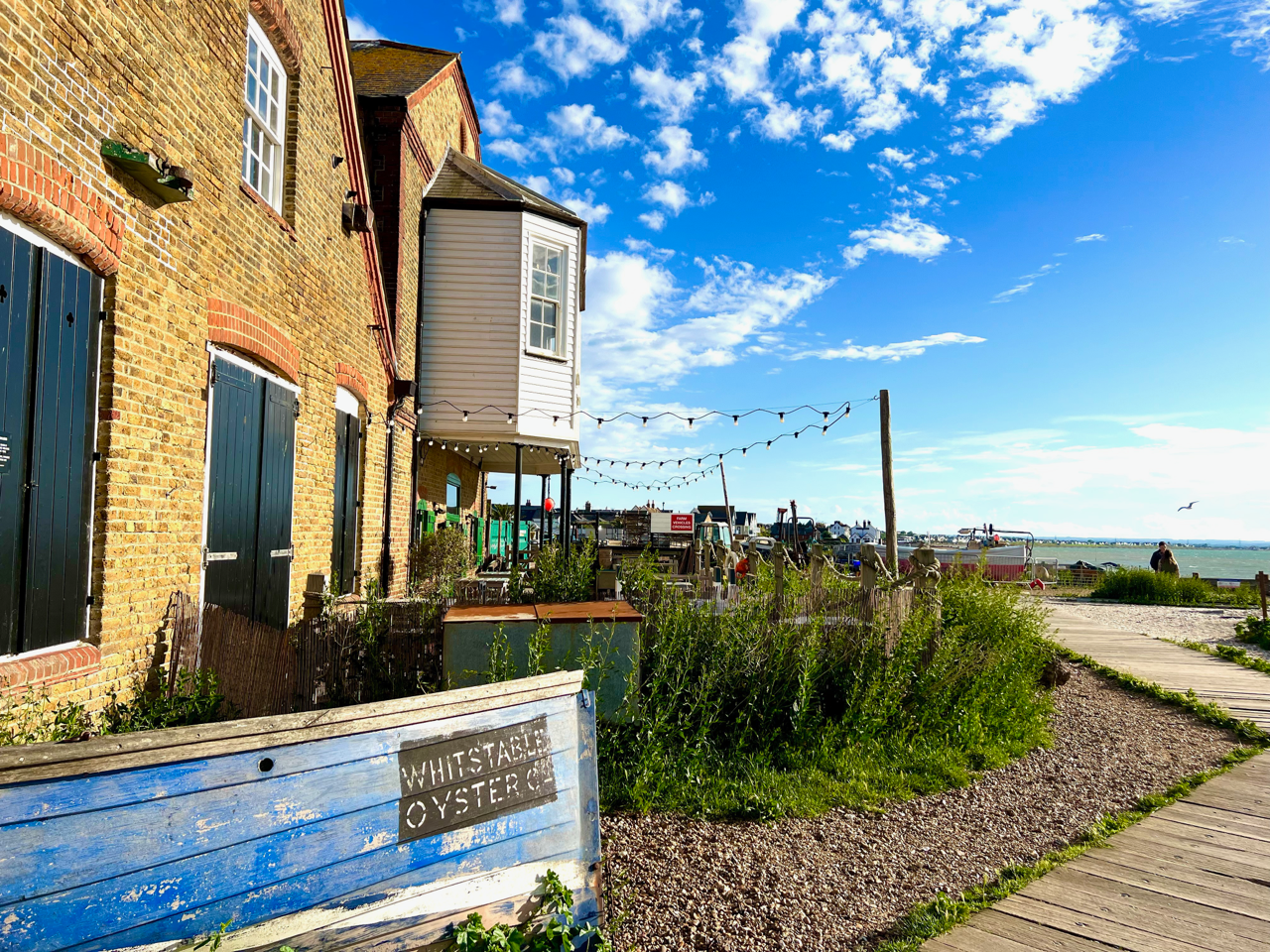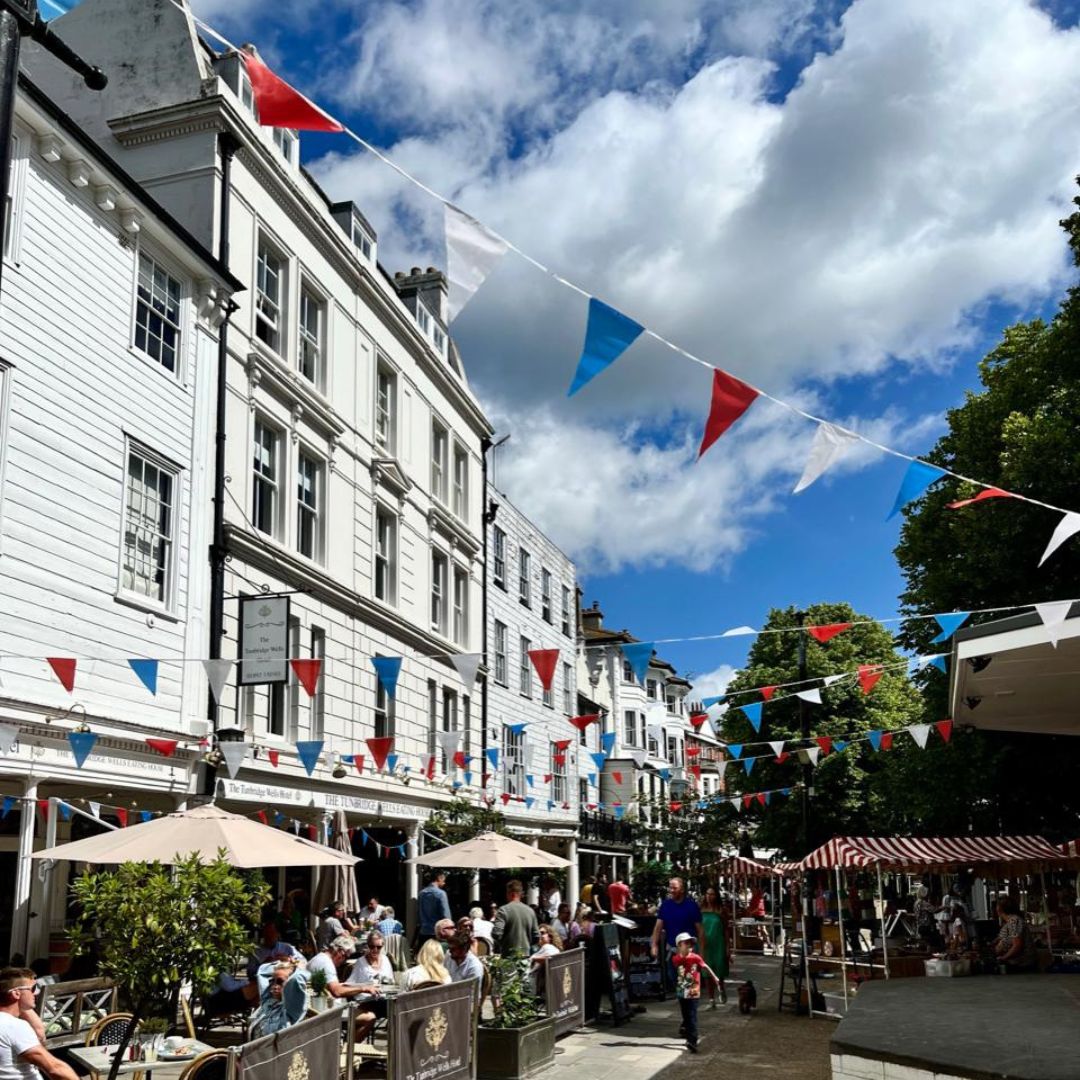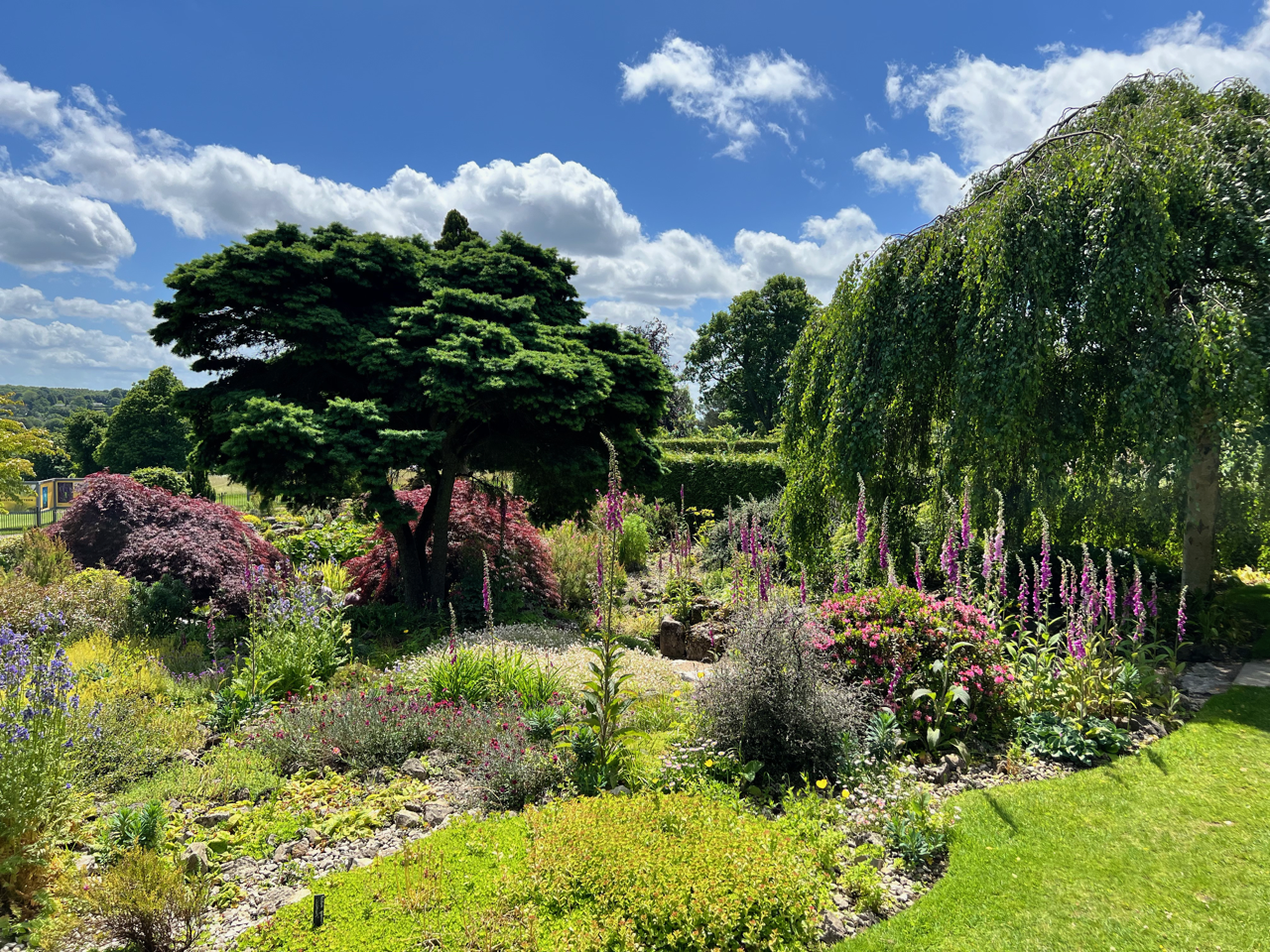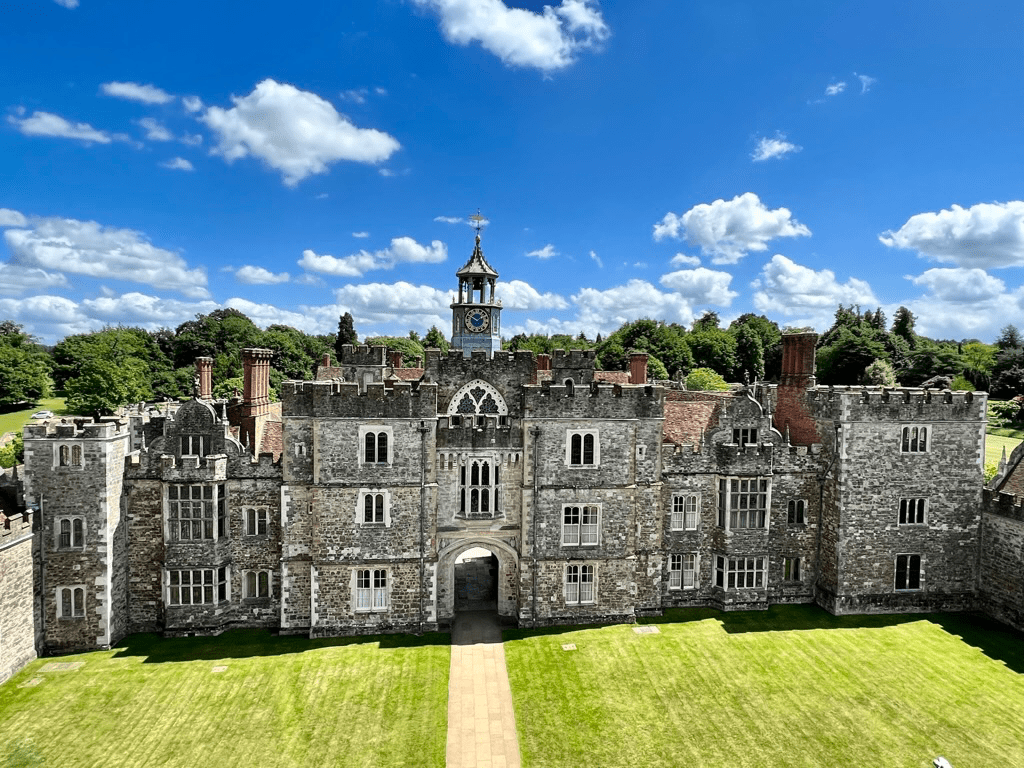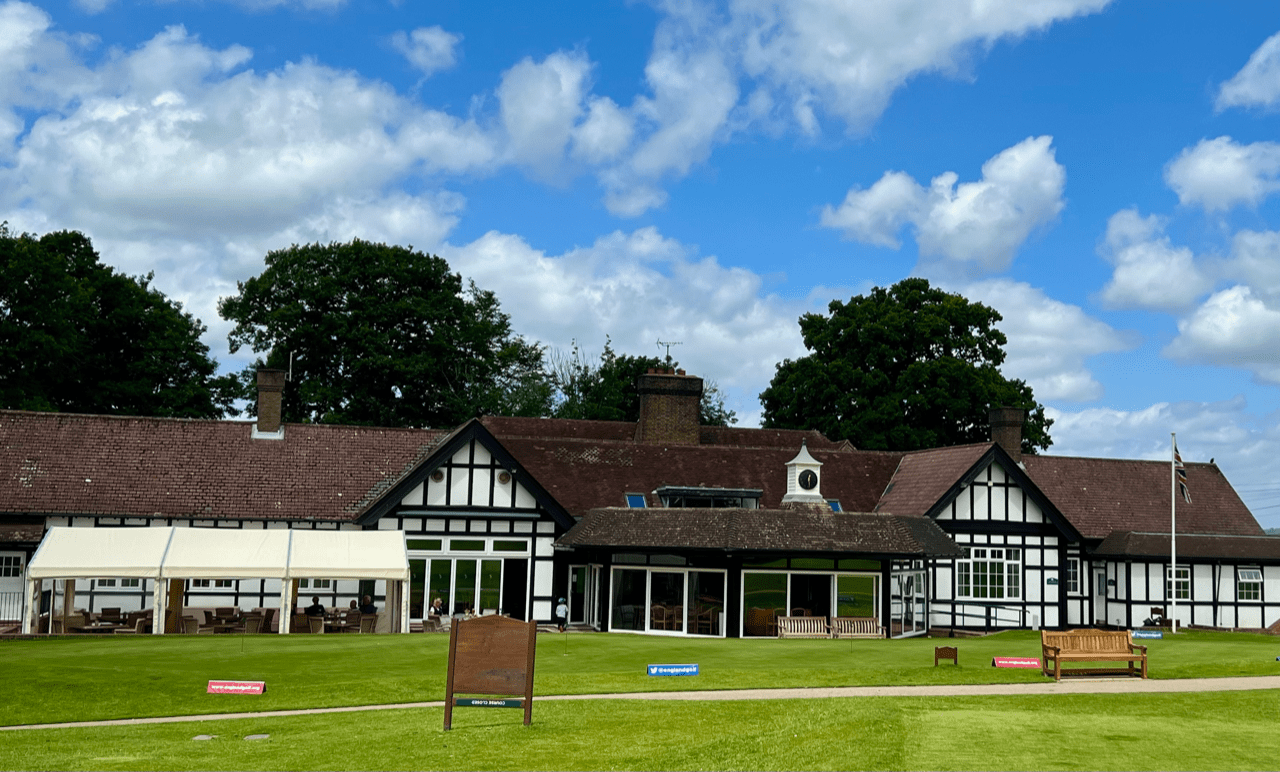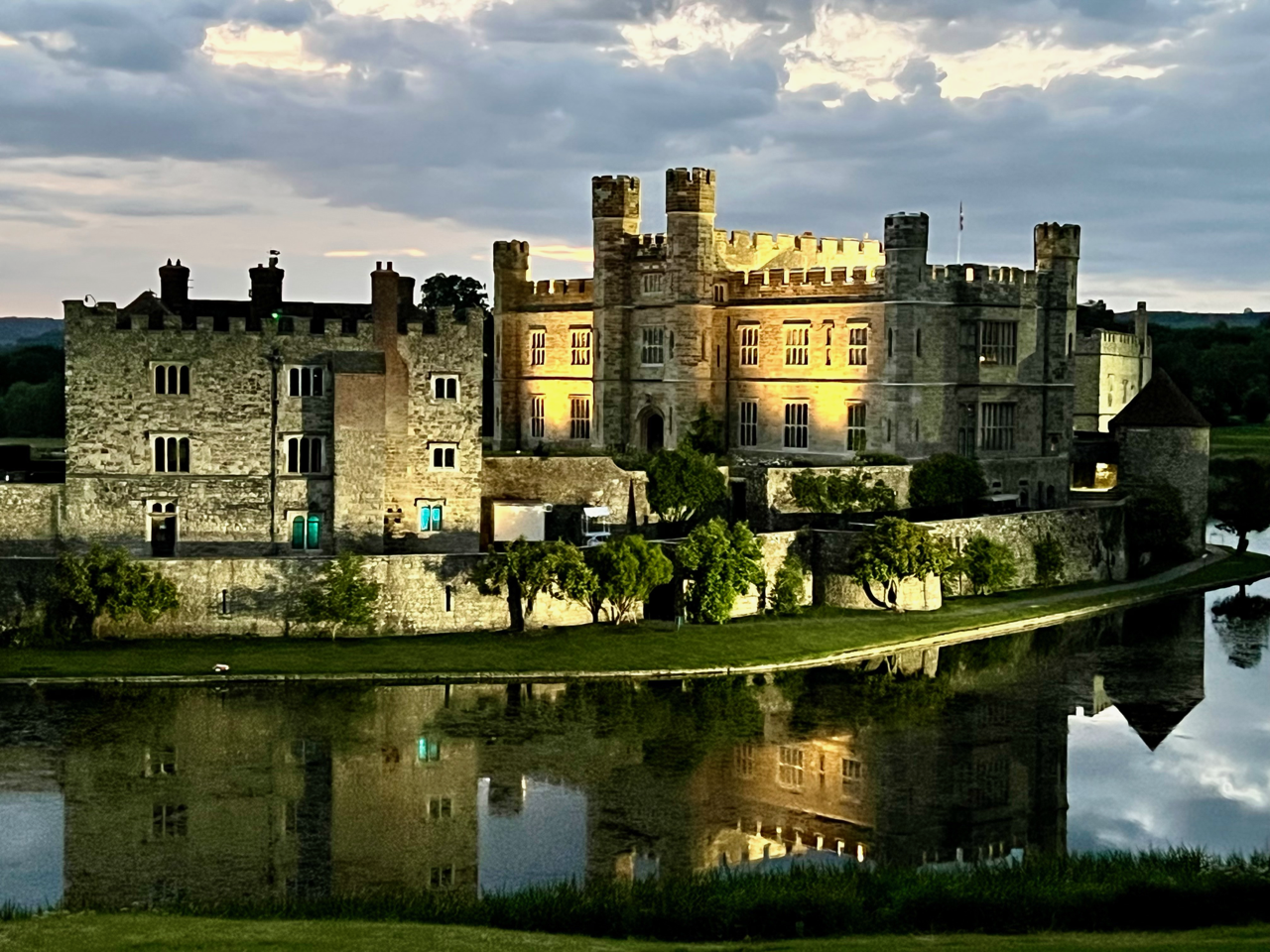Spoilt for choice
Of the more than 1,900 English golf courses, around one hundred are located in Kent, England’s oldest county. On our eight-day round trip by car, we get to know some of its exceptional courses, which completely captivate us.
Sandwich to start
From the harbour in Dunkerque in France, the quiet ferry ride across the English Channel takes two hours to reach Dover, whose white chalk cliffs shine in the sun.
From here it is only 20 minutes to the dreamy village of Sandwich, which is the best-preserved medieval town with the most half-timbered houses in England.
Sandwich is still one of the original famous ‘Five Harbours’, although unlike the other four towns of Dover, Hastings, Hythe and Romney, it no longer has direct access to the sea.
The popular snack of the same name is said to owe its name to an ‘Earl of Sandwich’ who, due to time constraints, often refrained from taking a full lunch. Instead, he opted for a slice of beef between two slices of bread. Those who observed this then wanted the same as Sandwich.
It is only a stone’s throw to the coast. Here, the three-star Lodge at Prince’s Golf Club awaits us, where we are greeted with a very warm welcome and spend the next four days. Situated at the entrance to the golf course, it has 34 double rooms and two suites. Our spacious, bright Bay Suite offers plenty of room and a great view through the floor-to-ceiling window of Sandwich Bay, which is within in easy reach.
We enjoy breakfast in the Lodge’s Brasserie Restaurant as well as delicious fish and meat dishes for dinner and a nightcap in the cosy bar.
Himalayas, Dunes and Shore
The tradition-steeped club was officially opened in 1907 as an 18-hole course. After World War II, it was expanded to 27 holes in 1950. From The Lodge it is a short drive to the clubhouse where the three loops start and end.
We encounter true links golf at its finest; a layout of impeccable quality with rolling fairways, deep rough, elevated tees, huge greens with incredible roll-out zones, large waste areas and a whopping 97 bunkers.
Its most famous is named after the legendary American Gene Sarazen, who in 1932, won the only Open Championship ever held here and was the first player to win all four majors. In that tournament, he used the sand wedge, which he invented, for the first time.
The bunker protects the green of the final hole of the Himalayas loop, which was redesigned into a modern links by the golf architectural firm Mackenzie & Ebert in 2018.

The spectacular Dunes and Shore loops have also undergone redesigns in recent years. They form the Championship Course, which is one of the top one hundred 18-hole courses in Great Britain and Ireland.
In addition to numerous high-ranking amateur and professional tournaments, the Final Qualifying was played on this course for the fourth time in a row. This is where the last few places were awarded for The Open Championship, which just celebrated its 150th anniversary in 2022 at St Andrews in Scotland.
We encounter a friendly, relaxed sporting atmosphere and warm hospitality throughout the club.
Attractive stay, play and dine packages perfectly round off this great offering.
More great impressions at:
https://www.princesgolfclub.co.uk
A perfect deal
We play our next round at the Royal Cinque Ports Golf Club in the coastal town of Deal. It is located only six kilometres from Prince’s on a narrow piece of former farmland. Deal, as it is also called, is one of the most recognised courses in the country. The Private Members Club, founded in 1892, also boasts a rich tradition. Here, too, we receive an extremely friendly welcome.
The Open was held here twice, in 1909 and 1920. More were planned, but due to the World Wars and flooding of the course several scheduled were cancelled.
Running directly alongside the sea, the front nine leads away from the clubhouse one after the other, the back nine just as straight and parallel back to it.
The fairways are short mown, hard as a board and not very wide. They roll through the open terrain with sandy waste areas making the round a breathtaking rollercoaster ride; constantly uphill and downhill. Sloping terrain is the rule whilst the rough is just as merciless as the countless deep pot bunkers.
The greens are extremely undulating, surrounded by huge run-off areas, furiously fast and almost impossible to read.

Hit and hope – incredible greens with perfect conditions (Photo Juergen Linnenbuerger
In addition, there are numerous blind tee shots. All this makes the round a real test of golf, especially when the wind blows from the sea. Then the last seven holes are supposed to be brutally difficult but we are spared this experience because we catch a sunny and almost windless day, which is extremely rare here.
Gary Player describes the last four holes with: “I consider the last four holes at Deal to be without doubt, the finest four consecutive holes on any course in the world.” No wonder, then, that the course is currently ranked 12th in England and among the best 100 in the world.

We enjoy the authentic links golf and are thrilled with the course all around; its layout and maintenance are world class.
The winners of professional and amateur tournaments held here adorn the numerous Honours Boards in the clubhouse dating back to the founding year. These include the annual The Halford Hewitt Cup, in which 10 players from each of 64 English public schools compete against each other.
On the clubhouse terrace we enjoy a pint and the great view over the course.
The official club video whets further appetite:
https://www.royalcinqueports.com/club/film/
In my recently released article “The cream of the crop” I report on the third coastal course we played, the Royal St. George’s Golf Club, which is considered the number one course in England. In it I describe, among other things, what its unique ‘Coffin’ bunker means.
Back to the Middle Ages
The venerable Canterbury is a university city and an episcopal see. The beginning of its imposing cathedral with its 75 m high tower dates back to 597, when Pope Gregory I sent a monk to Canterbury to build a ‘cathedra’ (seat) here. Today it is the headquarters of the Anglican Communion, the Church of England. The murder of Archbishop Thomas Becket in 1170 made it one of Europe’s most famous pilgrimage sites. A lit candle in the cathedral commemorates the site of this assassination.
We also like the pretty medieval streets with their small shops, restaurants and pubs, as well as the raft trip across the Stour, supposedly the cleanest river in England.
Also worthwhile from here is the short drive to the coastal towns of Margate, Broadstairs and Whitstable, the oyster centre on Kent’s north coast. Very delicious, what the sea brings to the plate here and a portion of the best fish ’n’ chips is a must, of course.
We continue west to Royal Tunbridge Wells. This picturesque spa town was already held in high esteem by Queen Victoria. The Pantiles, the oldest pedestrianised street in England, has its origins in the early 17th century and some houses dating from 1606 are still standing today. It captivates us with its white colonnades and transports us to another time.
Romantic gardens full of flowers
The most famous gardens in Kent are those of Sissinghurst Castle with its ten garden rooms. Not as crowded, but just as impressive, we find the Riverside Himalayas Garden and the Emmets Garden in Sevenoaks. Their variety and colourfulness are simply amazing.
Oh my deer
Right next door is Kent’s most beautiful inland course, which is one of the top 100 golf courses in England. Knole Park Golf Club is located in the 1,000 hectare public deer park of the same name. The club was founded in 1924 and designed by the architect J.F. Abercromby.
There are considerable differences in altitude to overcome on the hilly championship course, which is open to the public so pedestrians and joggers often cross the path.
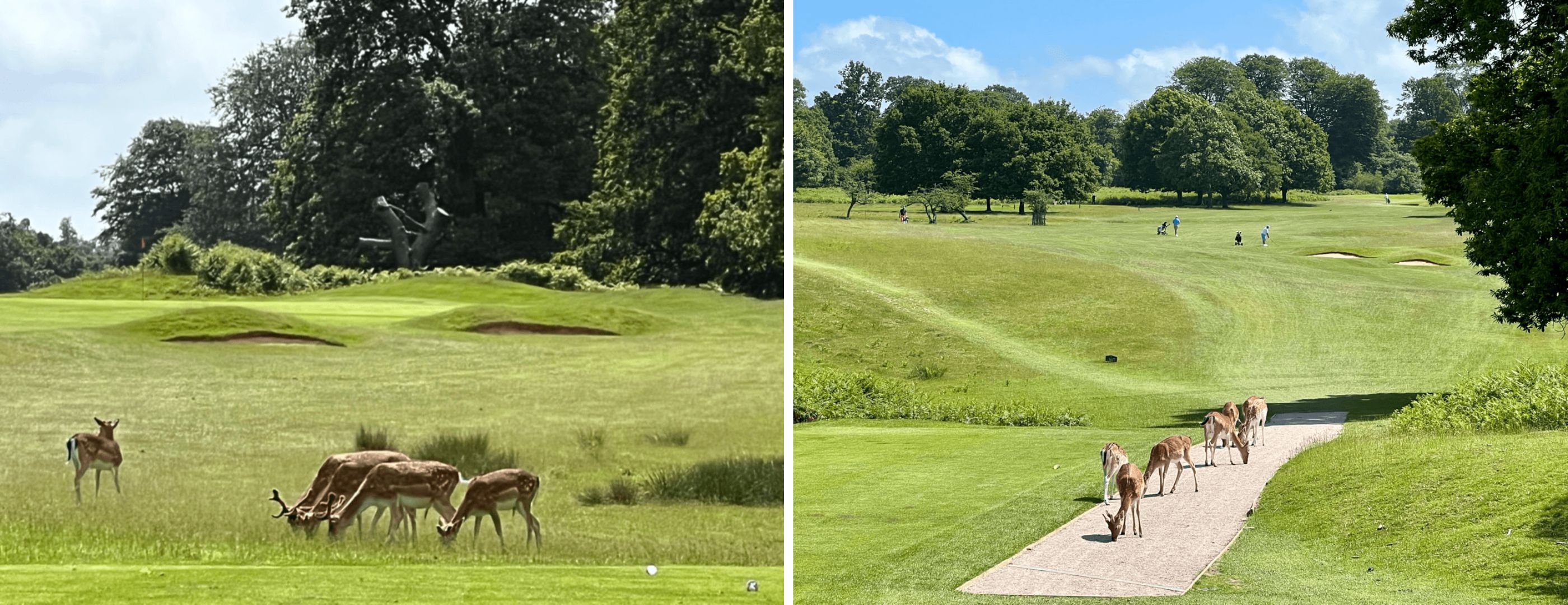
The spacious, open layout delights us as much as its state of maintenance. Each hole has its own identity and remains in the memory and the course is sportingly demanding, yet fair.
The 17th century Knole House towers in the background.
We receive a friendly welcome in the pro shop and the traditional clubhouse and are amazed by the Honours Boards with winners from about hundred years.
A castle like in a picture book
We spend the last two days of our round trip in the ‘most beautiful castle in the world’. At least, that’s how the moated Leeds Castle with its magnificent gardens advertises itself. It is located near the small town of Lenham near Maidstone in the middle of Kent. We are also captivated by it.
Built more than 900 years ago, it first became a royal residence in 1278, and several English queens lived here, including Catherine of Aragon, the first of the six wives of Henry VIII, which is why it is also called the castle of women. Since 1976, it has been owned by a private foundation and is open to the public.
The round on the 9-hole course of the Leeds Castle Golf Club with great views of the castle grounds forms the sporting conclusion of our golf trip.
The crowning finale is dinner in the Castle Restaurant with a view of the castle opposite. The end of our Kent trip to this beautiful part of England could not be more stylish.
We will definitely be back to see the other great golf courses, dormy villages, castles and fruit, hop and wine growing that also characterise the county. Then we hope the weather will be as fantastic as it has been all the time during our visit. See you soon Kent.
Cologne, July 2022
